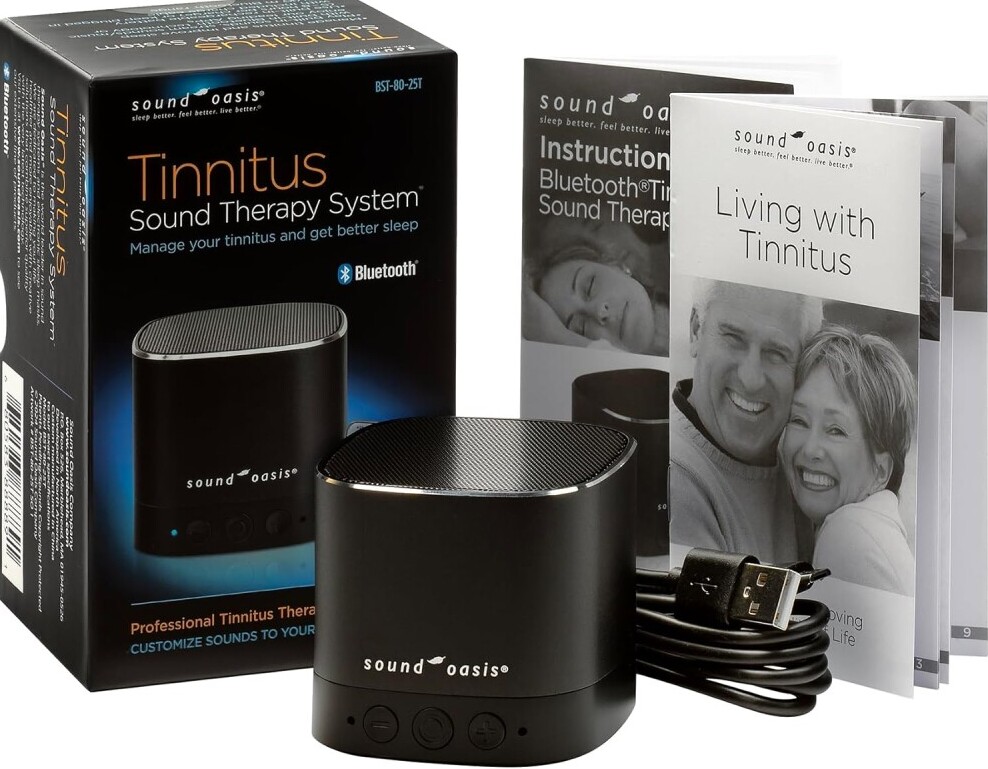Tinnitus is a condition where you experience ringing or buzzing sounds in the ears when there is no external sound present.
Over time, doctors and researchers have recognized that tinnitus can come in different forms. One form that many people might not be very familiar with is reactive tinnitus.
Reactive tinnitus is known for its tendency to intensify when exposed to various external sounds.
Let’s take a deeper look at what Reactive Tinnitus is.
What is Reactive Tinnitus?
Reactive tinnitus is a specific type of tinnitus that reacts noticeably to various external sounds.
While you may experience tinnitus as a constant background noise, reactive tinnitus is distinct because the sound tends to become much louder or more disruptive in response to environmental noise.

This reaction can make everyday settings feel challenging, especially if you are trying to enjoy a conversation or a quiet moment.
The condition is often linked to an increased sensitivity to sound, which can mean that even normal levels of noise feel overwhelming. In some cases, reactive tinnitus may occur alongside hyperacusis, a condition that makes you have a general intolerance to everyday sounds. Understanding these connections can be the first step in identifying strategies to ease the discomfort that comes from reactive tinnitus.
Early on, the symptoms might be mild, but as exposure to various sound environments accumulates, the reactions can become more pronounced.
It is very important to note that the intensity and frequency of tinnitus episodes vary greatly from person to person, largely depending on individual auditory sensitivity and overall health.
Recommended Reading: What Is Tinnitus And Hyperacusis? Is There A Difference?
Symptoms of Reactive Tinnitus
The symptoms of reactive tinnitus can vary significantly from one person to another. One of the main features is that your tinnitus will seem much louder immediately after or sometimes even during exposure to certain sounds.
For example, if you are in a noisy restaurant or near a busy street, you might notice that the ringing in your ears escalates dramatically. For some people, the effect might be immediate, while for others, there might be a short delay before the symptoms peak.
Alongside the increased ringing, you may also experience discomfort such as ear pain or a feeling of pressure in the ear. In certain cases, this heightened sensitivity can interfere with your ability to concentrate or sleep, making daily life a challenge.
Keeping track of when these symptoms occur can be a useful way to understand your specific triggers and to discuss them with a healthcare provider.
Additional symptoms may include a fluctuation in the baseline volume of the tinnitus sound and even the perception of multiple tones.
You might notice that the quality of the noise changes along with its volume, turning from a soft hum into a piercing tone. These variations can sometimes lead to feelings of anxiety and frustration, amplifying the overall burden of the condition.
What Causes Reactive Tinnitus?
Reactive tinnitus often stems from underlying issues with your auditory system. One of the leading causes is noise-induced hearing damage.
Repeated exposure to loud noises, whether it comes from loud music, heavy traffic, or machinery at work, can wear down your hearing and might trigger reactive episodes.
Hearing damage isn’t the only factor, though. There is also a connection between reactive tinnitus and hyperacusis, where the ears become too sensitive, causing normal sounds to be perceived as excessively loud or even painful.
Stress and anxiety can further amplify the perception of sound, making reactive tinnitus episodes more intense. In addition, certain medications—often referred to as ototoxic drugs—can contribute by affecting the delicate balance of your inner ear.
Other factors that might play a role include age-related hearing loss, ear infections, and physical trauma to the head or neck.
Often, these underlying issues interact in complex ways to produce the heightened reactivity to sound.
How Reactive Tinnitus Differs from Hyperacusis?
It’s important to recognize the distinction between reactive tinnitus and hyperacusis, even though they can occur together.
Hyperacusis is a condition in which everyday sounds are experienced as overwhelmingly loud or even painful.
In reactive tinnitus, the focus is primarily on the change in the tinnitus sound itself—usually an increase in its volume—when you are exposed to certain external noises.
While hyperacusis might lead to discomfort or pain at normal sound levels, reactive tinnitus is more about a noticeable spike in the ringing or buzzing sound in your ears.
Some individuals might experience both conditions simultaneously, which can complicate the overall picture
Because the management strategies for hyperacusis and reactive tinnitus may differ, accurate diagnosis is essential.
Let’s talk next about diagnosing reactive tinnitus.
Diagnosing Reactive Tinnitus
If you suspect that you have reactive tinnitus, consultation with an ear, nose, and throat (ENT) specialist or an audiologist is an important step.
During your visit, the doctor might ask you to track your symptoms in a sort of diary. This record can help identify any patterns and pinpoint exactly which sounds are triggering your reactive tinnitus.
Hearing tests and sound tolerance tests are common tools used during the diagnostic process.
These tests provide insights into how your hearing system responds to varying sound levels and frequencies. In some cases, advanced imaging tests might be performed to rule out other underlying issues with your ear.
Treatment and Management Options
Although there is no definitive cure for reactive tinnitus, there are several treatment and management options that have helped many people myself included, to reduce the impact of symptoms on their daily lives.
One popular method is sound therapy. Sound therapy involves controlled exposure to neutral background noise that might help in reducing the sharp contrast between silence and the triggered tinnitus burst.
Tinnitus Retraining Therapy (TRT) is another approach that combines sound therapy with counseling. The idea is to train your brain to gradually ignore the tinnitus sound, making it less noticeable over time.
Cognitive Behavioral Therapy (CBT) can also be quite helpful. By addressing negative thoughts and reducing anxiety associated with the sounds, CBT can ease the overall intensity and emotional distress that comes with reactive tinnitus.
It is often recommended that people with reactive tinnitus use ear protection in noisy environments. For instance, musicians’ earplugs can help reduce overall sound intensity without completely muffling ambient noise. I have some articles on earplugs reviews, so feel free to check them out.
Lifestyle changes, such as reducing caffeine intake and managing stress through relaxation techniques, can also contribute to lowering the frequency of reactive episodes.
For me mindfulness meditation helps, and wearing my Phonak hearing aid helps tremendously.
Other people find that acupuncture, or gentle physical exercises, offer relief.
Over time, as you make these adjustments and experiment with various therapeutic options, you may find that the episodes of reactive tinnitus become less disruptive and easier to manage.
Living with Reactive Tinnitus: Coping Strategies
Living with reactive tinnitus can feel like a constant challenge, but there are many practical strategies to help you manage day-to-day life.
Using white noise machines or calming sound apps can create a gentle background hum that makes sudden loud noises less jarring. This continuous sound can provide a buffer that diminishes the contrast when reactive tinnitus is triggered by environmental noise.
Keeping a tinnitus diary is another useful tactic. By logging the times when your symptoms become more pronounced and noting the surrounding sounds or activities, you can start to spot patterns.
Once these triggers are identified, you may take steps to either avoid them or slowly get used to them. Several online forums and support communities also offer shared experiences and strategies that might prove very helpful.
Final Thoughts
This condition does not have to dominate your life. Keeping track of your progress with a tinnitus diary, using ear protection, and making gradual changes in your lifestyle can help you regain control.
Remember that while reactive tinnitus often poses challenges, effective management techniques can ease its effects and improve your overall quality of life. Taking small, consistent steps can make a big difference in day-to-day well-being.
Below are some articles that I wrote that might pique your interest. These articles provide extra details on the subject, expanding on both the challenges and the available solutions:
- What is Tinnitus and Hyperacusis?
- Top Tinnitus Home Remedies
- How to Manage Your Mental Health with Tinnitus
- Review of Hearing Aids with Tinnitus Masking Features
Ultimately, managing reactive tinnitus is a process of trial and error—learning which techniques give you a boost, and which need to be adjusted.
I know that it can be tough at times. But hang in there. Know that you are not alone.
I created this website so that you can share your story and reach out for help or advice. Or even if you just want to chat, I am here.
Talk to you soon.
Regards and Take Care
Roopesh

